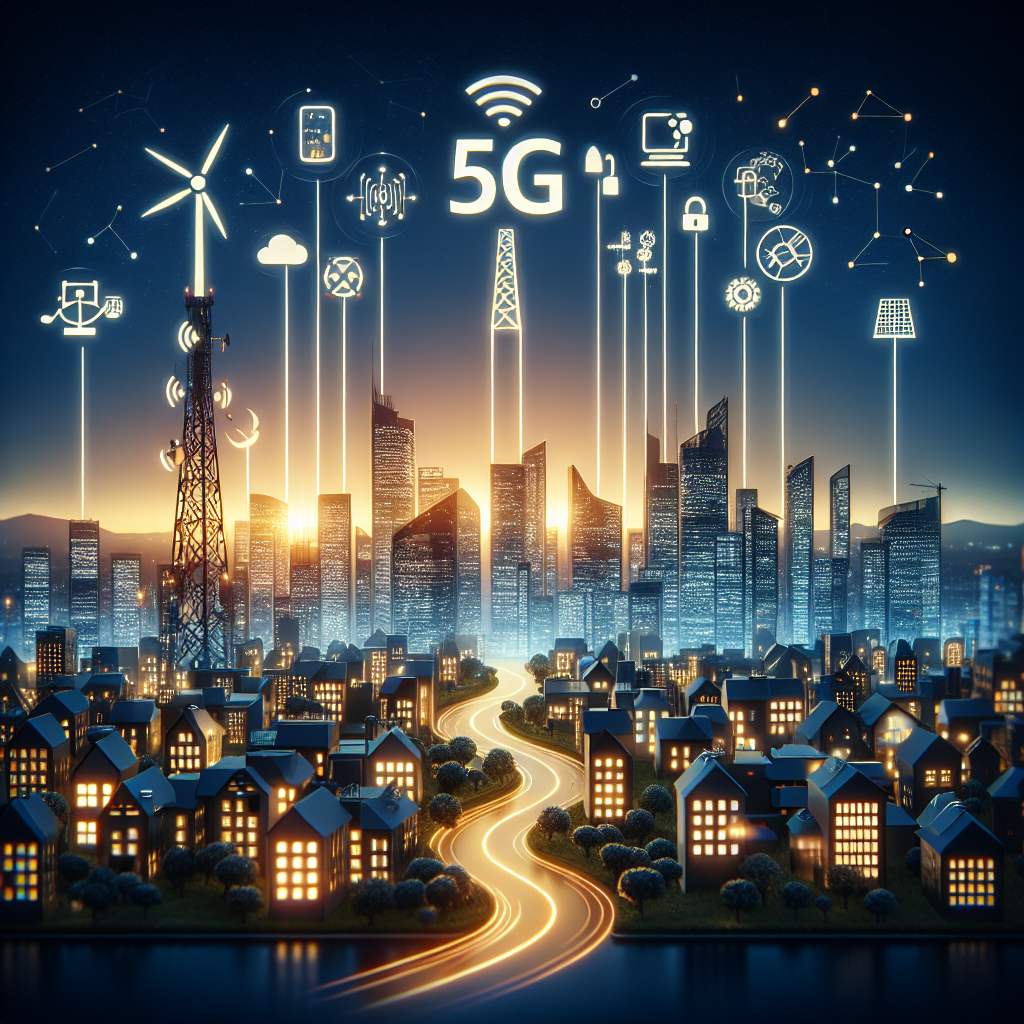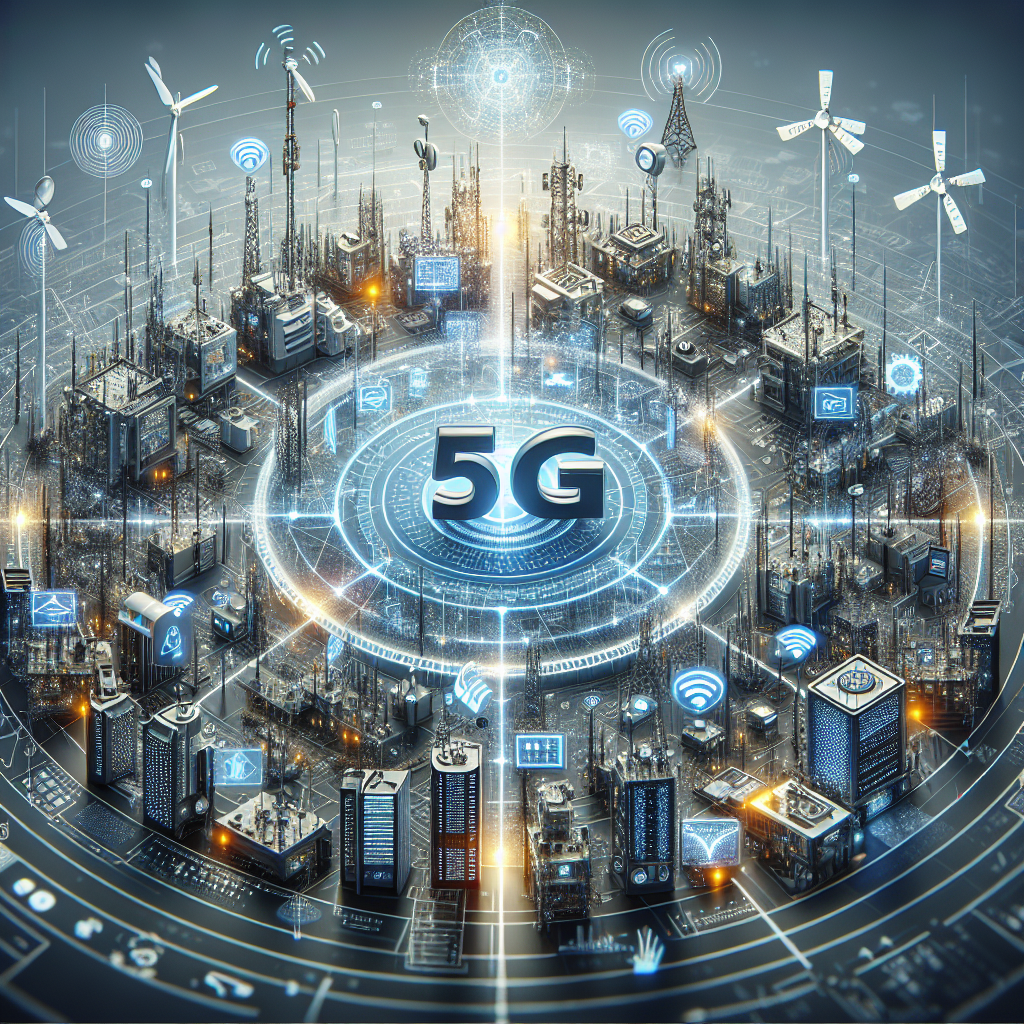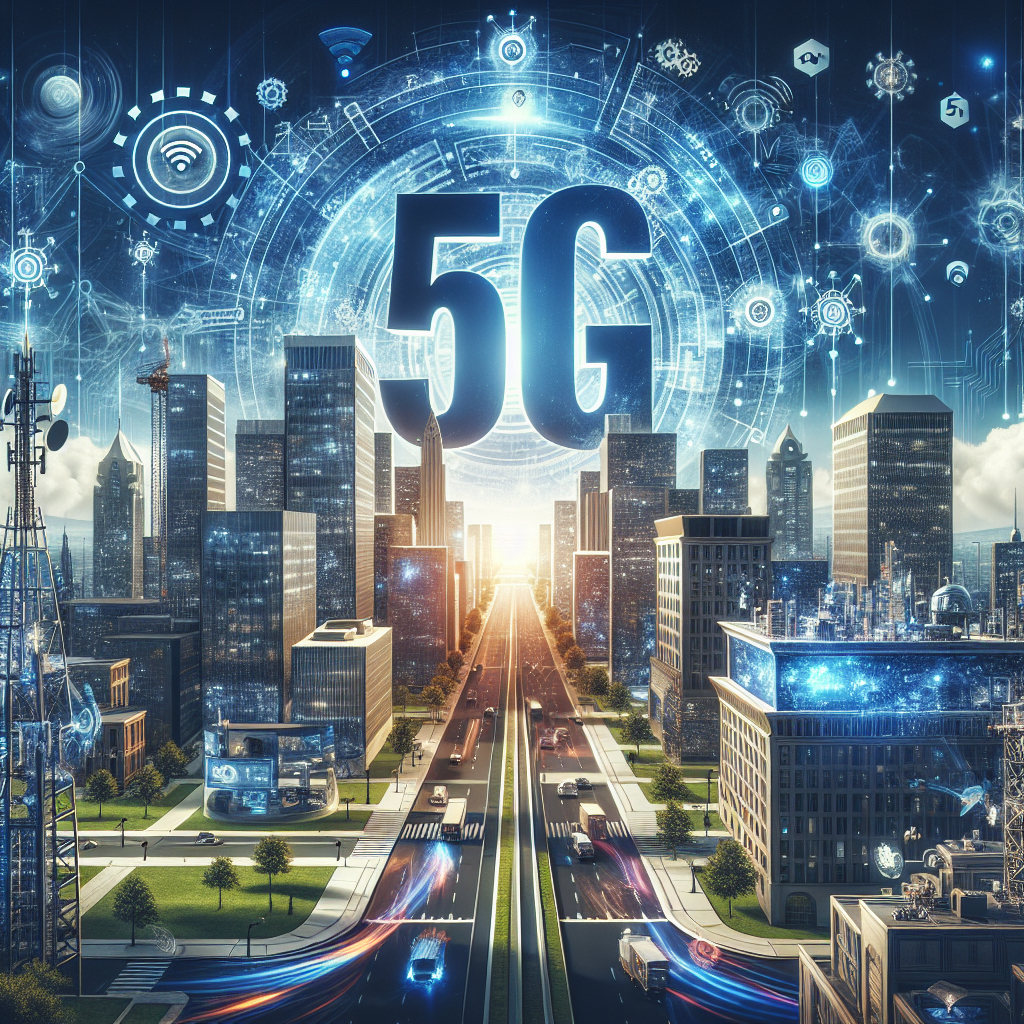In today’s digital age, the integration of 5G technology into the realm of smart energy has revolutionized the way we harness and utilize power. This comprehensive guide explores the innovative potential of 5G technology in optimizing energy consumption, enhancing grid efficiency, and enabling the seamless coordination of decentralized energy systems. By leveraging the high-speed connectivity and low latency of 5G networks, smart energy solutions can now operate with unprecedented speed and precision, paving the way for a more sustainable and efficient energy ecosystem. Join us on this journey as we unravel the power of 5G technology in shaping the future of smart energy and high-speed internet.
Understanding 5G Technology
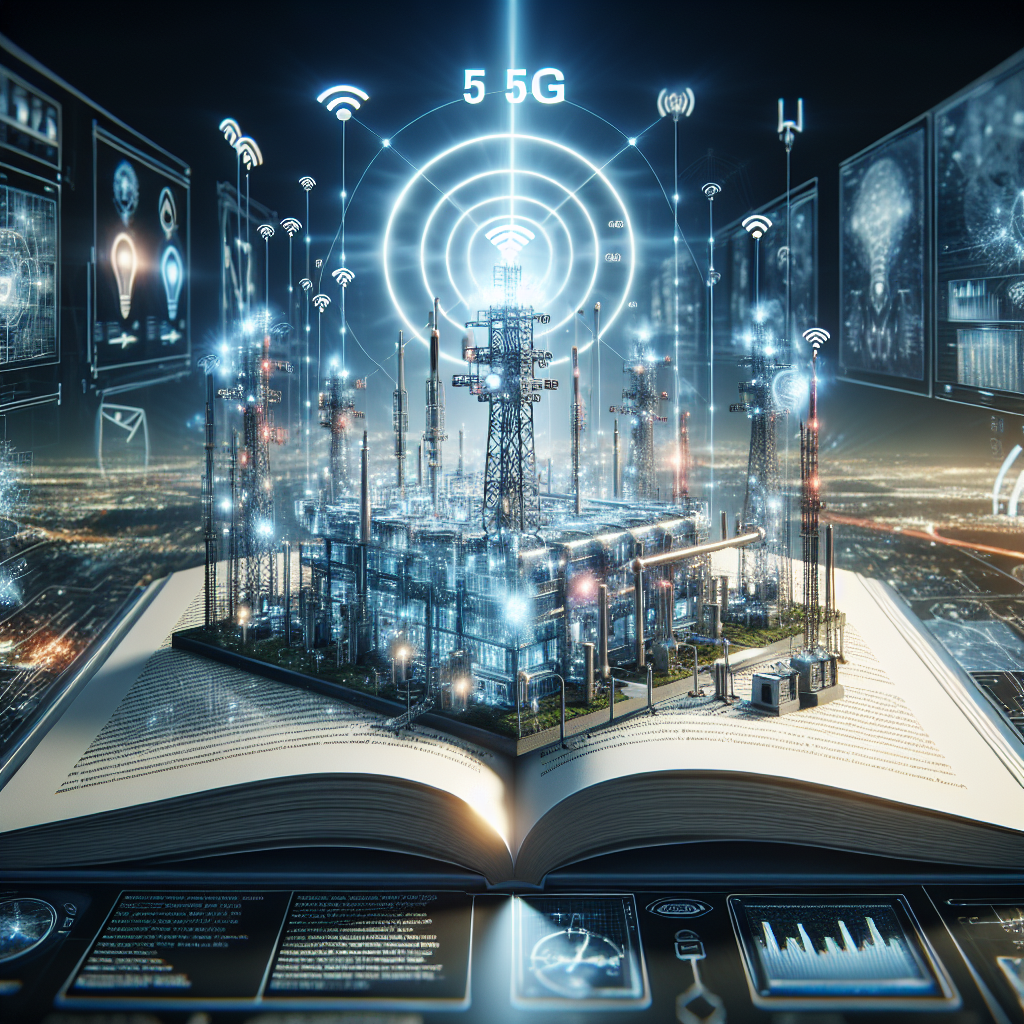
– ### Exploring the Fundamentals of 5G Technology
5G technology represents the fifth generation of mobile networks, promising significant advancements over its predecessors. It operates on higher frequency bands, enabling faster data speeds, lower latency, and increased network capacity. Unlike 4G, which relies primarily on large cell towers, 5G utilizes a combination of macrocells, small cells, and massive MIMO (Multiple Input Multiple Output) antennas to enhance coverage and connectivity. This technology leverages beamforming techniques to direct wireless signals more precisely, improving efficiency and reducing interference. By harnessing millimeter-wave frequencies, 5G facilitates the transmission of massive amounts of data, making it ideal for supporting emerging technologies like the Internet of Things (IoT) and smart energy systems.
-
Key Features and Capabilities of 5G Networks
One of the key features of 5G networks is their ability to deliver ultra-low latency, enabling real-time communication between devices and applications. This near-instantaneous responsiveness is critical for applications that require rapid data transfer, such as autonomous vehicles and industrial automation. Additionally, 5G networks offer significantly higher data transfer speeds compared to previous generations, allowing for seamless streaming of high-definition content and immersive virtual reality experiences. The network slicing capabilities of 5G further enhance its versatility, enabling operators to allocate specific portions of the network to different applications based on their unique requirements. This flexibility is particularly beneficial for smart energy systems, as it allows for the prioritization of critical services like grid monitoring and demand response.

The Intersection of 5G and Smart Energy
5G technology and smart energy systems are converging to create a new era of efficiency and innovation in the energy sector. This intersection holds immense potential for transforming how energy is generated, distributed, and consumed. Below are the key aspects that define the intersection of 5G and smart energy:
- Enhanced Connectivity:
5G technology provides ultra-fast and reliable connectivity, enabling seamless communication between various components of smart energy systems. This high-speed connectivity is crucial for real-time monitoring, control, and optimization of energy infrastructure. - IoT Integration:
The Internet of Things (IoT) plays a vital role in smart energy applications, allowing devices to communicate and exchange data to improve energy efficiency. 5G’s low latency and high capacity support the massive connectivity requirements of IoT devices in smart energy grids. - Edge Computing:
With 5G, edge computing capabilities are brought closer to the energy source, enabling faster data processing and decision-making at the edge of the network. This is particularly beneficial for managing distributed energy resources and ensuring grid stability. - Data Analytics:
The combination of 5G and smart energy systems facilitates advanced data analytics, empowering utilities to gain valuable insights into energy consumption patterns, predictive maintenance needs, and grid performance. These insights drive informed decision-making and enhance overall operational efficiency. - Cybersecurity:
As smart energy systems become more interconnected and data-driven, cybersecurity becomes a critical concern. 5G technology offers enhanced security features such as network slicing and encryption, safeguarding smart energy infrastructure against cyber threats and ensuring data integrity and confidentiality. - Scalability and Flexibility:
5G’s scalability and flexibility allow smart energy systems to adapt to changing demands and integrate new technologies seamlessly. This agility is essential for accommodating renewable energy sources, electric vehicles, and other emerging trends in the energy landscape.
The convergence of 5G technology and smart energy systems represents a paradigm shift in the way energy is managed and consumed, paving the way for a more sustainable and resilient energy future.
Applications of 5G in Smart Energy
5G technology is revolutionizing the way smart energy systems operate, offering unprecedented opportunities for enhancing efficiency, reliability, and sustainability. By leveraging the capabilities of 5G networks, various applications are transforming the energy sector and paving the way for a smarter future.
-
Enhancing Grid Management with 5G Technology
Implementing 5G technology in grid management enables real-time monitoring and control of energy distribution networks. Through ultra-low latency and high-speed data transmission, utilities can efficiently manage grid operations, detect faults instantaneously, and respond promptly to fluctuations in demand. This leads to improved reliability, reduced downtime, and enhanced overall performance of the energy grid.
Moreover, 5G facilitates the integration of renewable energy sources into the grid by enabling seamless communication between distributed energy resources and grid infrastructure. This dynamic interaction allows for optimized energy flow, better load balancing, and enhanced grid stability, ultimately supporting the transition to a more sustainable energy ecosystem.
-
Optimizing Energy Consumption through IoT and 5G Connectivity
The combination of Internet of Things (IoT) devices and 5G connectivity offers unprecedented capabilities for optimizing energy consumption in various settings, such as residential, commercial, and industrial sectors. By connecting smart meters, sensors, and appliances to 5G networks, real-time data collection and analysis become possible, allowing for more precise monitoring and control of energy usage.
This synergy between IoT and 5G enables the implementation of advanced energy management systems that can automatically adjust energy consumption based on demand, pricing, and grid conditions. By intelligently orchestrating energy-intensive processes and devices, significant energy savings can be achieved, leading to cost reductions for consumers and improved energy efficiency across the board.
Overcoming Challenges and Considerations
In the realm of smart energy integration, leveraging 5G technology presents a myriad of opportunities but also comes with its own set of challenges that need to be addressed for successful implementation. Understanding and overcoming these challenges is crucial for unlocking the full potential of 5G in smart energy systems. Below are some key considerations in this regard:
- Interoperability Issues: One of the primary challenges in integrating 5G technology into smart energy systems is ensuring seamless interoperability between various devices, sensors, and systems. Different standards and protocols can hinder the smooth communication and data exchange essential for efficient smart energy management.
- Network Resilience and Reliability: The reliability and resilience of 5G networks are paramount for the uninterrupted operation of smart energy grids. Any downtime or network failures can have severe consequences, leading to disruptions in energy supply and management. Ensuring robust network infrastructure and redundancy measures is crucial to mitigate these risks.
- Data Privacy and Security: With the vast amounts of data generated and transmitted in smart energy systems powered by 5G, ensuring data privacy and security is a top priority. Safeguarding sensitive information from cyber threats, unauthorized access, and potential breaches is essential to maintain trust and integrity in the smart energy ecosystem.
- Scalability and Flexibility: As smart energy systems continue to evolve and expand, scalability and flexibility become key considerations in leveraging 5G technology effectively. The ability to scale infrastructure, accommodate growing demands, and adapt to changing requirements is essential for long-term success in smart energy applications.
- Cost Constraints and Investment: Implementing 5G technology in smart energy systems involves significant costs related to infrastructure deployment, device integration, and ongoing maintenance. Balancing these upfront investments with the long-term benefits and value proposition of 5G-enabled smart energy solutions is vital for decision-makers in the energy sector.
- Skill Gap and Training Needs: The successful adoption of 5G technology in smart energy systems also hinges on addressing the skill gap and training needs of personnel involved in system operation and maintenance. Providing adequate training programs and upskilling initiatives can empower workforce readiness and ensure smooth transition to 5G-powered smart energy solutions.
Future Prospects and Innovations
The future prospects of leveraging 5G technology for smart energy present a myriad of exciting possibilities that can revolutionize the energy sector. Innovations in this realm are not only centered around enhancing connectivity but also about optimizing energy distribution and consumption in unprecedented ways.
- 5G-enabled Smart Meters: The integration of 5G technology with smart meters allows for real-time monitoring of energy usage, enabling more accurate billing and facilitating efficient energy management for both consumers and utility providers.
- Edge Computing for Energy Optimization: By harnessing the power of edge computing in conjunction with 5G networks, energy systems can process data locally, reducing latency and enabling quicker decision-making for dynamic energy demands.
- AI-driven Energy Forecasting: Artificial Intelligence (AI) algorithms powered by 5G connectivity can analyze vast amounts of data to predict energy consumption patterns, optimize energy distribution, and anticipate potential grid failures, thus ensuring a more reliable and resilient energy infrastructure.
- Enhanced Grid Resilience through IoT Integration: The Internet of Things (IoT) devices, empowered by 5G connectivity, can create a robust network of interconnected sensors and actuators that monitor grid performance in real-time, detect faults proactively, and enable autonomous grid reconfiguration to minimize downtime and enhance overall grid resilience.
- Virtual Power Plants: 5G technology facilitates the aggregation of distributed energy resources into virtual power plants, enabling efficient coordination of renewable energy sources, energy storage systems, and demand response mechanisms to stabilize the grid, reduce energy costs, and promote sustainability.
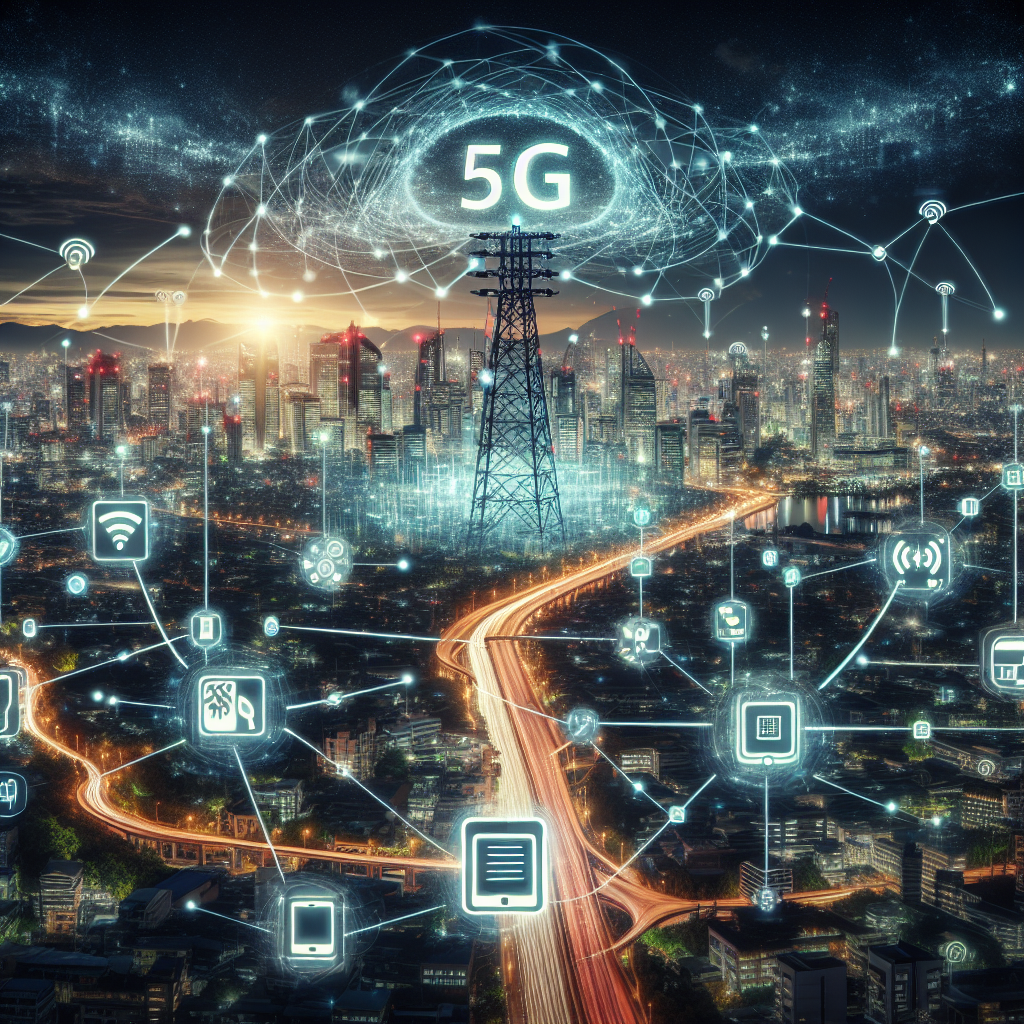
These emerging trends and innovations signify a paradigm shift in the energy landscape, where the convergence of 5G technology with smart energy solutions holds the promise of a more efficient, reliable, and sustainable energy ecosystem.
Maximizing the Potential of 5G for Smart Energy
5G technology represents a significant advancement in the realm of smart energy, offering unparalleled opportunities for optimization and efficiency. By harnessing the full potential of 5G capabilities, energy systems can be transformed to operate with greater intelligence and responsiveness. To achieve this transformation effectively, it is essential to consider the following key aspects:
- Enhanced Connectivity and Communication
- Leveraging the ultra-fast speeds and low latency of 5G networks to enable seamless communication between devices, sensors, and energy management systems.
- Facilitating real-time data transmission and analysis to support dynamic energy optimization and decision-making processes.
- Integration of IoT Devices
- Integrating a multitude of IoT devices within energy infrastructure to enable remote monitoring, control, and automation of energy systems.
- Utilizing 5G connectivity to support a vast network of interconnected devices, enhancing overall system visibility and operational flexibility.
- Empowering Edge Computing
- Leveraging edge computing capabilities enabled by 5G networks to process data closer to its source, reducing latency and improving response times for critical energy applications.
- Distributing computing resources strategically across the network to enable localized decision-making and enhance system resilience.
- Implementing Predictive Maintenance
- Utilizing 5G-enabled predictive analytics tools to monitor equipment health in real-time and proactively address maintenance needs before failures occur.
- Enhancing asset reliability and longevity through data-driven insights generated by advanced machine learning algorithms powered by 5G connectivity.
- Enabling Demand Response
- Leveraging the high bandwidth and reliability of 5G networks to support dynamic demand response mechanisms, enabling energy providers to manage peak loads effectively.
- Facilitating real-time communication with end-users to adjust energy consumption patterns based on grid conditions and pricing signals, promoting efficient utilization of resources.
By strategically deploying 5G technology and embracing its capabilities, the smart energy sector can unlock new possibilities for optimization, sustainability, and resilience in energy systems. Collaborative efforts and innovative strategies are crucial to harnessing the full potential of 5G for smart energy applications, paving the way for a more efficient and interconnected energy landscape.
FAQs for Unleashing the Power of 5G Technology for Smart Energy: A Comprehensive Guide
What is 5G technology and how does it relate to smart energy systems?
5G technology refers to the fifth generation of mobile network technology, which promises faster speeds, lower latency, and increased capacity. When it comes to smart energy systems, 5G can provide the necessary connectivity and data transfer speeds to enable various energy management applications, such as real-time monitoring of energy consumption, predictive maintenance of equipment, and demand response programs.
How can 5G technology enhance the efficiency of smart energy systems?
5G technology can enhance the efficiency of smart energy systems by enabling seamless communication between different devices and sensors in a smart grid infrastructure. This real-time communication allows for better coordination and control of energy resources, leading to optimized energy usage, reduced waste, and lower costs for consumers.
What are some potential use cases of 5G technology in the smart energy sector?
Some potential use cases of 5G technology in the smart energy sector include smart metering systems that provide real-time energy consumption data, grid management solutions that optimize energy distribution and storage, and integration of renewable energy sources like solar and wind power into the grid. Additionally, 5G can support the deployment of electric vehicle charging infrastructure and enable demand response programs that encourage consumers to shift their energy usage during peak hours.
How secure is 5G technology for smart energy applications?
Security is a critical concern when it comes to implementing 5G technology in smart energy applications. However, with proper encryption protocols, network segmentation, and authentication mechanisms in place, 5G networks can be made secure enough to protect sensitive data and ensure the reliability of smart energy systems. It is important for organizations to work closely with network security experts to develop robust security measures for their 5G-enabled smart energy solutions.
